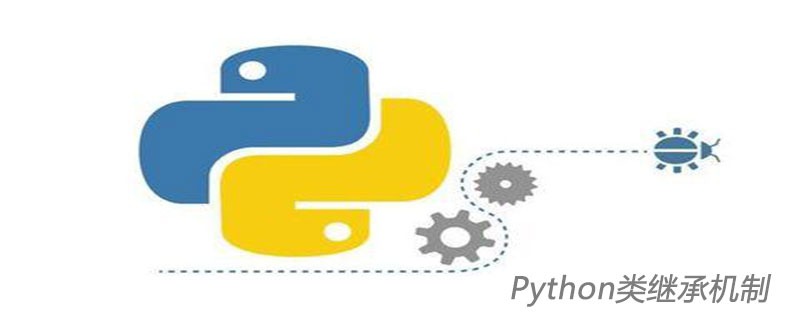
下面实现一个类继承的小程序,下面一边结合代码一边介绍相关继承的知识。例子以车、汽车为例,车为父类、汽车为子类。
一、定义父类Vehicle
class Vehicle(): def __init__(self,wheelcount, power):#构造方法,参数有轮子数和动力 self.wheelcount,self.power,self.totaldistance = wheelcount,power,0 #初始化行驶总里程为0 def gettotaldistance(self):return self.totaldistance #定义获取形式总里程的方法 def drive(self,distance):#定义drive方法 self.totaldistance += distance
二、定义子类Car
class Car(Vehicle): def __init__(self,wheelcount, power): super().__init__(wheelcount, power) Vehicle.__init__(self,wheelcount, power) super(Car,self).__init__(wheelcount, power) self.oil,self.oilcostperkm=0,0.1
子类内首先重写了构造方法,注意:
1.首先调用了超类的构造方法,为了说明超类方法的调用,代码将三种调用超类构造方法都实现了,实际上只要有一种就够了;
2.超类构造方法中初始化了轮子数、动力以及总行驶里程。子类调用超类构造方法后,对于汽车又初始化了油量和每公里油耗。?
def drive(self,distance):
realdistance=min(distance,self.oil/self.oilcostperkm)
super().drive(realdistance)
self.oil -= realdistance*self.oilcostperkm
print("车开了{}公里,目前邮箱存油{:.2f}升,目前车辆总里程:{}KM".format(realdistance,self.oil,
super().gettotaldistance())
子类重写了父类的drive方法,本次只用了一种老猿推荐的方式调用父类的drive方法,重写的方法内根据油量确认了实际驾驶里程之后调用了父类的drive方法,同时对油量进行了调整,输出了一些车况信息,其中调用了父类的gettotaldistance()方法。
def oiling(self,oil):
self.oil+=oil
print("加油{}升,目前邮箱存油{:.2f}升".format(oil,self.oil))
实现子类独有的加油方法,父类的车可以是畜力或人力等其他方式驱动就没有这个方法。
def needoiling(self): if self.oil<5: return True else:return False
实现子类独有的是否需要加油判断方法。
def output(self):
print("车子动力为{},100KM油耗{}升,车子累计行驶{}KM,油箱存油{:.2f}L".format(self.power,self.oilcostperkm*100,
super().gettotaldistance(),self.oil))
实现子类独有的输出车况的方法,其中调用了父类的gettotaldistance()方法。
到此为止整个子类的代码实现完成,它完全继承了父类方法gettotaldistance,采用重写+父类调用方式实现了drive和构造方法的继承,并实现了needoiling、oiling两个子类独有的方法,其实例变量self.wheelcount,self.power,self.totaldistance是从父类继承。
三、调用的代码
下面是使用该类定义的一个实例,
car = Car(4,'汽油发动机')
car.oiling(50)
for i in range(1,100):
print("***************第{}次循环************".format(i))
car.oiling(random.randint(10,60)) ?#随机加油x升
car.drive(random.randint(5,1000)) #随机驾驶x公里
car.output() ?#输出车况信息
if car.needoiling(): break ?#如果油不够了就结束循环
四、 上述例子的完整源代码
#coding:utf-8
import random
class Vehicle():
def __init__(self,wheelcount, power):
self.wheelcount,self.power,self.totaldistance = wheelcount,power,0
def drive(self,distance):
self.totaldistance += distance
def gettotaldistance(self):return self.totaldistance
class Car(Vehicle):
def __init__(self,wheelcount, power):
super().__init__(wheelcount, power)
Vehicle.__init__(self,wheelcount, power)
super(Car,self).__init__(wheelcount, power)
self.totaldistance,self.oil,self.oilcostperkm=0,0,0.1
def drive(self,distance):
realdistance=min(distance,self.oil/self.oilcostperkm)
super().drive(realdistance)
self.oil -= realdistance*self.oilcostperkm
print("车开了{}公里,目前邮箱存油{:.2f}升,目前车辆总里程:{}KM".format(realdistance,
self.oil,super().gettotaldistance()))
def oiling(self,oil):
self.oil+=oil
print("加油{}升,目前邮箱存油{:.2f}升".format(oil,self.oil))
def needoiling(self):
if self.oil<5: return True
else:return False
def output(self):
print("车子动力为{},100KM油耗{:.2f}升,车子累计行驶{}KM,油箱存油{:.2f}L".format(self.power,self.oilcostperkm*100,super().gettotaldistance(),self.oil))
car = Car(4,'汽油发动机')
car.oiling(50)
for i in range(1,100):
print("***************第{}次循环************".format(i))
car.oiling(random.randint(10,60))
car.drive(random.randint(5,1000))
car.output()
if car.needoiling(): break
神龙|纯净稳定代理IP免费测试>>>>>>>>天启|企业级代理IP免费测试>>>>>>>>IPIPGO|全球住宅代理IP免费测试




































